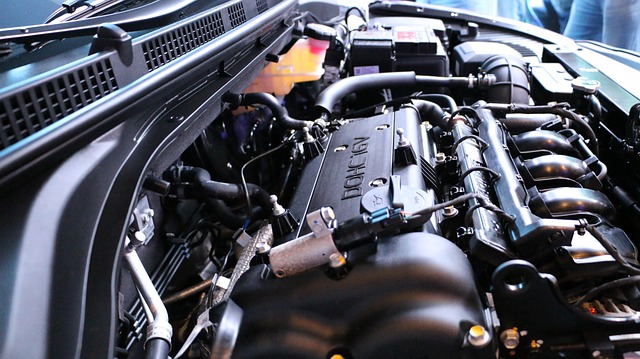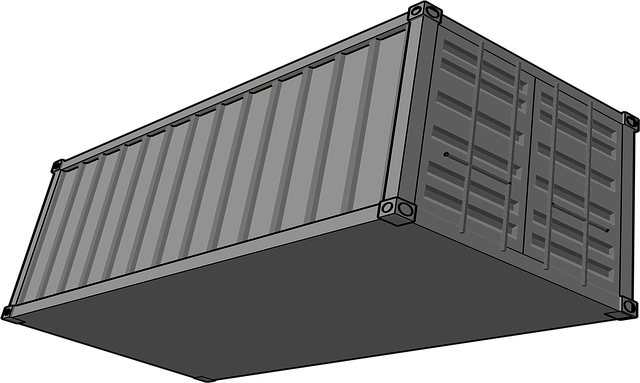Looking to register your car in California? This comprehensive guide walks you through the process, ensuring a smooth transition. From understanding key requirements to gathering essential documents, this article is your step-by-step navigation tool. Learn how to verify your vehicle’s VIN (a crucial step) and complete the registration application efficiently at your local DMV. By following these straightforward instructions, you’ll be on the road in no time while adhering to California’s specific regulations.
- Understand California Car Registration Requirements
- Gather Necessary Documents for Vehicle Registration
- Visit Your Local California Department of Motor Vehicles (DMV)
- Complete the Vehicle Registration Application Process
- Verify Your Vehicle's VIN and Pay Registration Fees
Understand California Car Registration Requirements

Before registering your car in California, it’s crucial to understand the state’s specific requirements for vehicle registration and documentation. The process involves several steps, including a thorough inspection of your vehicle’s Vehicle Identification Number (VIN). California requires all vehicles to undergo a VIN verification process, which ensures that the car matches the information on its registration documents. This is a critical step in combating vehicle theft and fraud.
A mobile VIN inspection or verification service can be particularly useful for residents who prefer convenience. These services allow you to have your car’s VIN checked at your location, making it easier to navigate the registration process. By ensuring your vehicle meets all California standards, including a valid and accurate VIN, you’ll streamline the registration and avoid potential delays or issues down the line.
Gather Necessary Documents for Vehicle Registration

Before you start the registration process, it’s crucial to gather all the essential documents required by the California Department of Motor Vehicles (DMV). One critical piece of documentation is the Vehicle Identification Number (VIN) – a unique code that serves as the fingerprint of your vehicle. Utilize a mobile vin inspection or a vin verifier to retrieve this information accurately and efficiently. This number can be found on the vehicle’s registration certificate, or you can check the driver-side door jamb or engine bay for a sticker with the VIN printed on it.
Additionally, you’ll need proof of insurance, a valid driver’s license, and the previous owner’s signature if applicable. If you’ve recently purchased the vehicle from a dealership, they typically handle these details for you. However, if you’re buying from a private seller, ensure that all documents are in order before scheduling your mobile vin inspection or conducting a vin inspection at a DMV field office to complete the registration process smoothly.
Visit Your Local California Department of Motor Vehicles (DMV)

The first step to register your car in California involves visiting your local California Department of Motor Vehicles (DMV) office. This is where you’ll initiate the process and gather all the necessary documents and forms for registration. It’s also a good opportunity to conduct a VIN inspection, as the DMV will require a valid vehicle identification number (VIN) verifier to ensure the car’s authenticity.
When visiting your local DMV, consider using services like a mobile VIN verifier, which can provide quick and accurate VIN inspections right at their location. This digital verification process streamlines the initial steps of registration, ensuring that all information related to your car is correct and up-to-date.
Complete the Vehicle Registration Application Process

To complete the vehicle registration process in California, you’ll need to fill out the Vehicle Registration Application (Form DV305). This form requires detailed information about your car, including its make, model, year, and unique VIN number. Accurately entering this data is crucial for a smooth registration. One helpful tool to ensure your VIN is correctly recorded is a vin verifier, which can be used during the application process or even through mobile vin verification services that offer convenient, on-the-go VIN inspection.
After inputting all necessary details, submit the form along with the required fees and documents to the California Department of Motor Vehicles (DMV). This usually involves visiting a local DMV office for an in-person vin inspection, but many services now offer mobile vin inspection options as well, streamlining the process further.
Verify Your Vehicle's VIN and Pay Registration Fees

After gathering all the required documents and ensuring your vehicle meets California’s standards, it’s time to verify your Vehicle Identification Number (VIN). This critical step involves using a reliable VIN verifier to cross-check your car’s information against state databases. A mobile VIN verification or inspection ensures accuracy and convenience by allowing you to complete this process digitally. Once your VIN is confirmed, you’ll need to pay the registration fees. These fees vary based on vehicle type and age, so make sure to check the California Department of Motor Vehicles (DMV) website for up-to-date rates.
Registering a car in California involves understanding clear requirements, gathering essential documents, and completing a straightforward application process at your local DMV. Don’t forget to verify your vehicle’s VIN (using a vin verifier) and pay the associated registration fees for a smooth transition. By adhering to these steps, you’ll ensure your vehicle is legally registered and ready to hit California’s roads.



